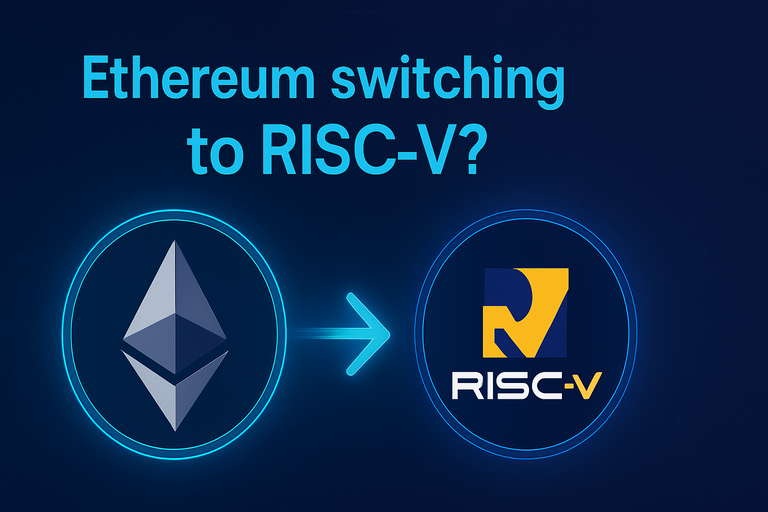Ethereum switching to RISC-V?

Ethereum co-founder Vitalik Buterin has proposed a significant change to the network's architecture: replacing the Ethereum Virtual Machine (EVM) with RISC-V, an open-source instruction set architecture. This proposal aims to improve the efficiency and scalability of the Ethereum execution layer.
But what does that mean?

What is EVM and what is RISC-V?
EVM (Ethereum Virtual Machine): It is the execution environment that processes smart contracts on Ethereum. Currently, contracts are written in languages like Solidity and compiled into EVM bytecode.
RISC-V: It is an open and standardized instruction set architecture (ISA), widely used in embedded systems and, more recently, in blockchain solutions. It allows greater flexibility and efficiency in code execution.
Advantages of replacing EVM with RISC-V
- Improved efficiency: The transition to RISC-V can significantly improve the efficiency of the execution layer, especially in applications that use zero-knowledge (ZK) proofs. Studies indicate that this can result in performance gains of up to 100x in certain cases.
- Architectural simplification: Using RISC-V can simplify the Ethereum execution layer, making it more modular and easier to maintain.
- Compatibility with popular languages: Developers will be able to continue using languages like Solidity and Vyper, which would be adapted to compile directly to RISC-V, maintaining familiarity and reducing the learning curve.
- Backwards compatibility: If implemented well, existing EVM contracts can continue to function and interact with new RISC-V based contracts, ensuring a smooth transition.

Challenges and considerations
- Implementation complexity: Replacing EVM with RISC-V is a profound structural change that will require time, robust testing, and community consensus.
- Technology Maturity: While promising, full integration of RISC-V into Ethereum is still in the early stages and requires further development and auditing.
- Impact on existing infrastructure: EVM-based tools, libraries, and other infrastructure will need to be adapted or rewritten to support RISC-V.
Conclusion
Vitalik Buterin's proposal to replace the EVM with RISC-V represents a bold approach to solving scalability and efficiency challenges on Ethereum. While it could bring significant potential benefits, the transition will require a coordinated community effort and careful consideration of long-term impacts. The question remains: will this be enough for Ethereum to reach price levels above the last all-time high of US$4.8 thousand in November 2021?
Posted Using INLEO
ETH is starting to be a non-sense project...imo
https://www.reddit.com/r/Buttcoin/comments/1k7nxtb/ethereum_switching_to_riscv/
The rewards earned on this comment will go directly to the people( @uwelang ) sharing the post on Reddit as long as they are registered with @poshtoken. Sign up at https://hiveposh.com. Otherwise, rewards go to the author of the blog post.